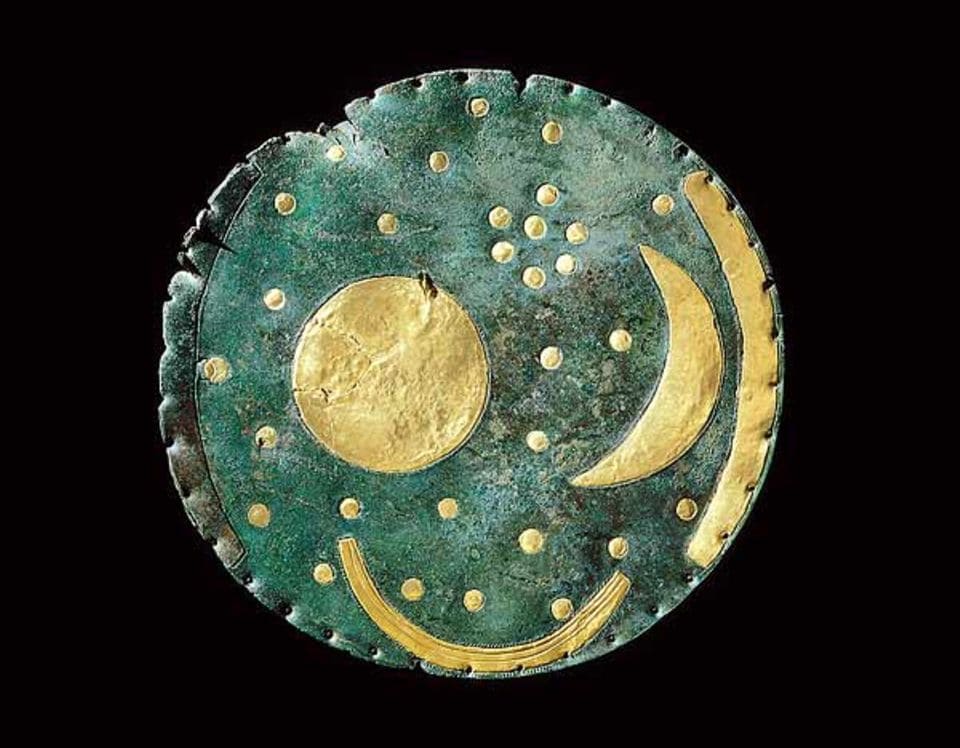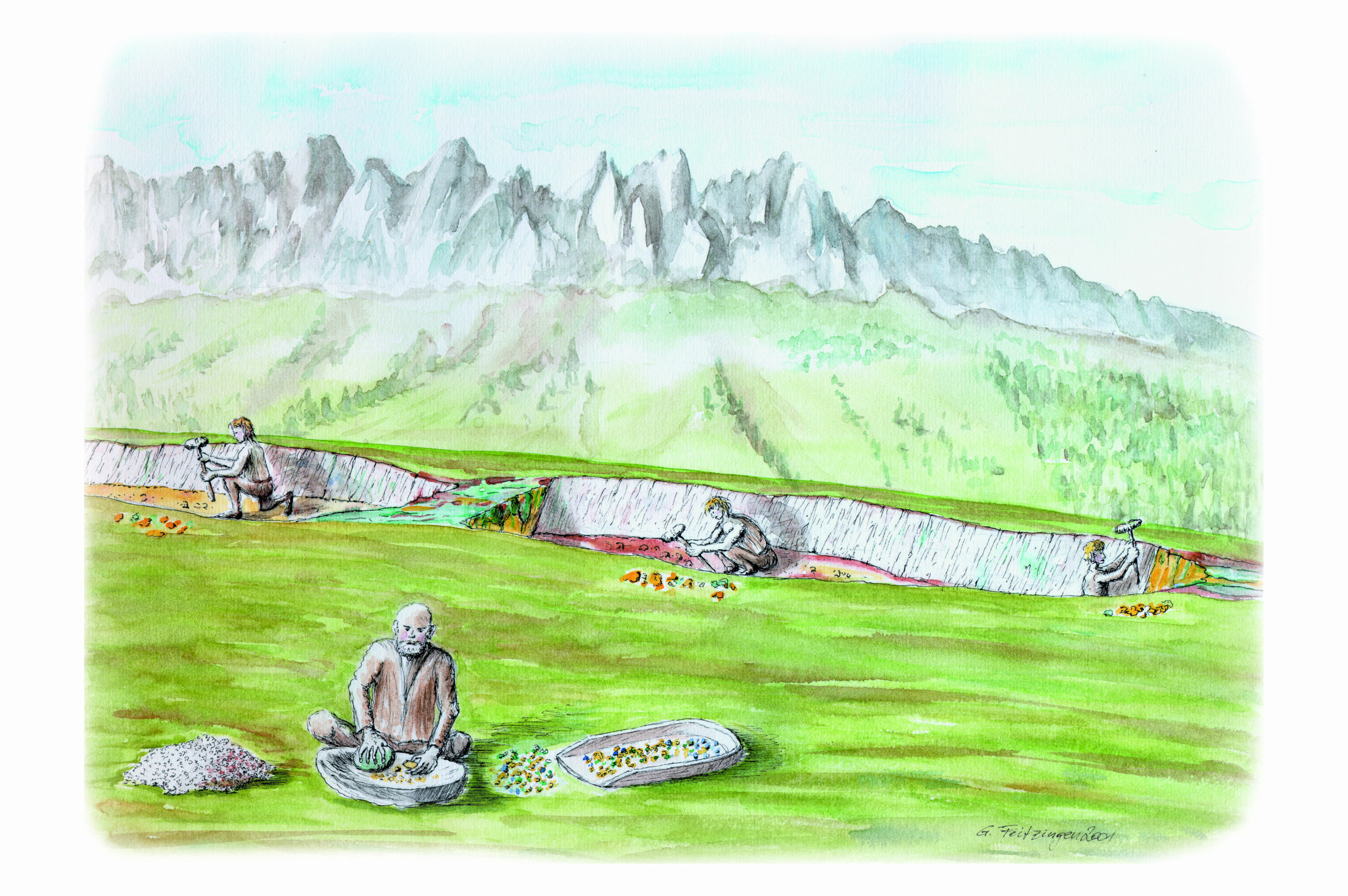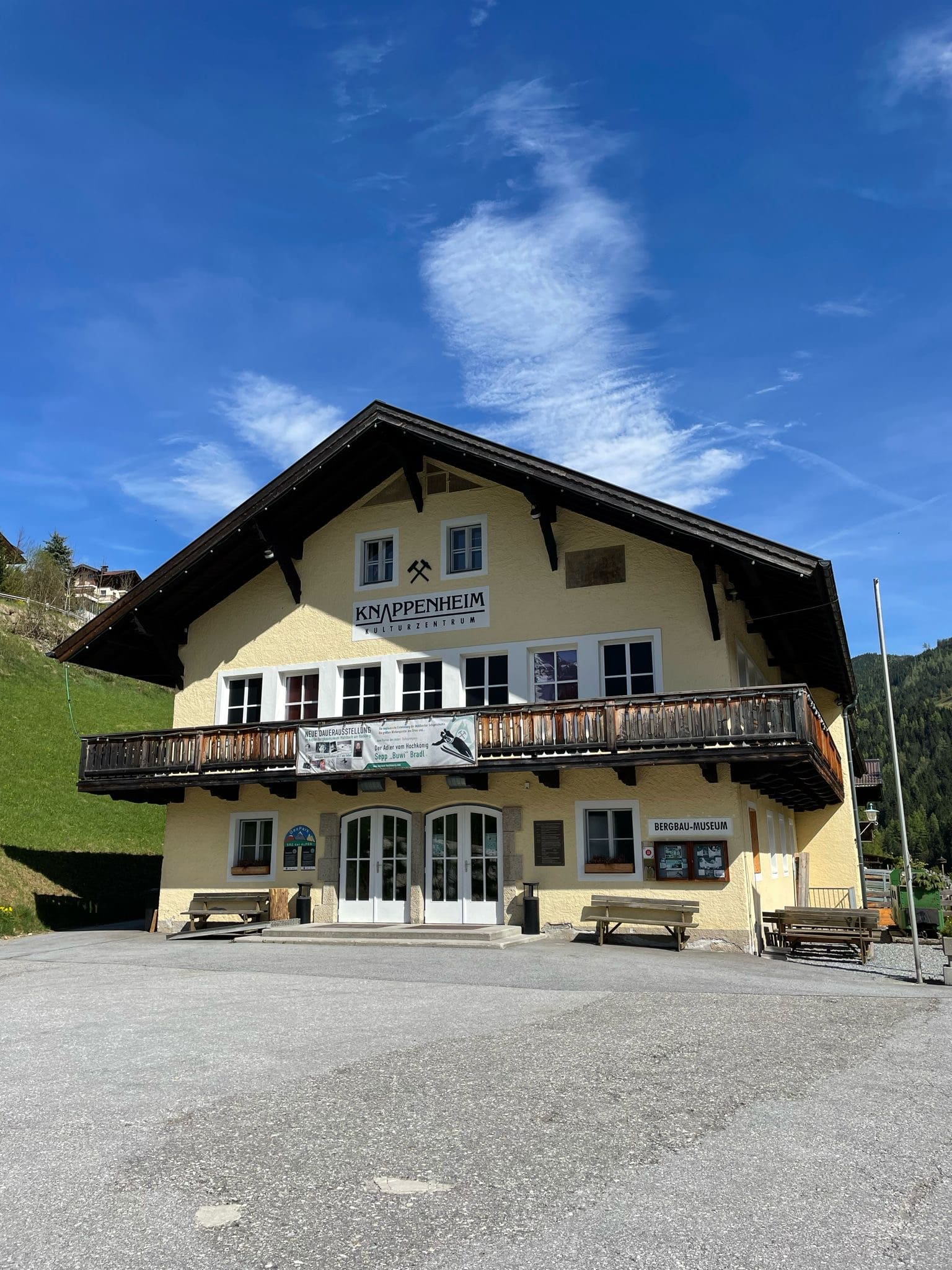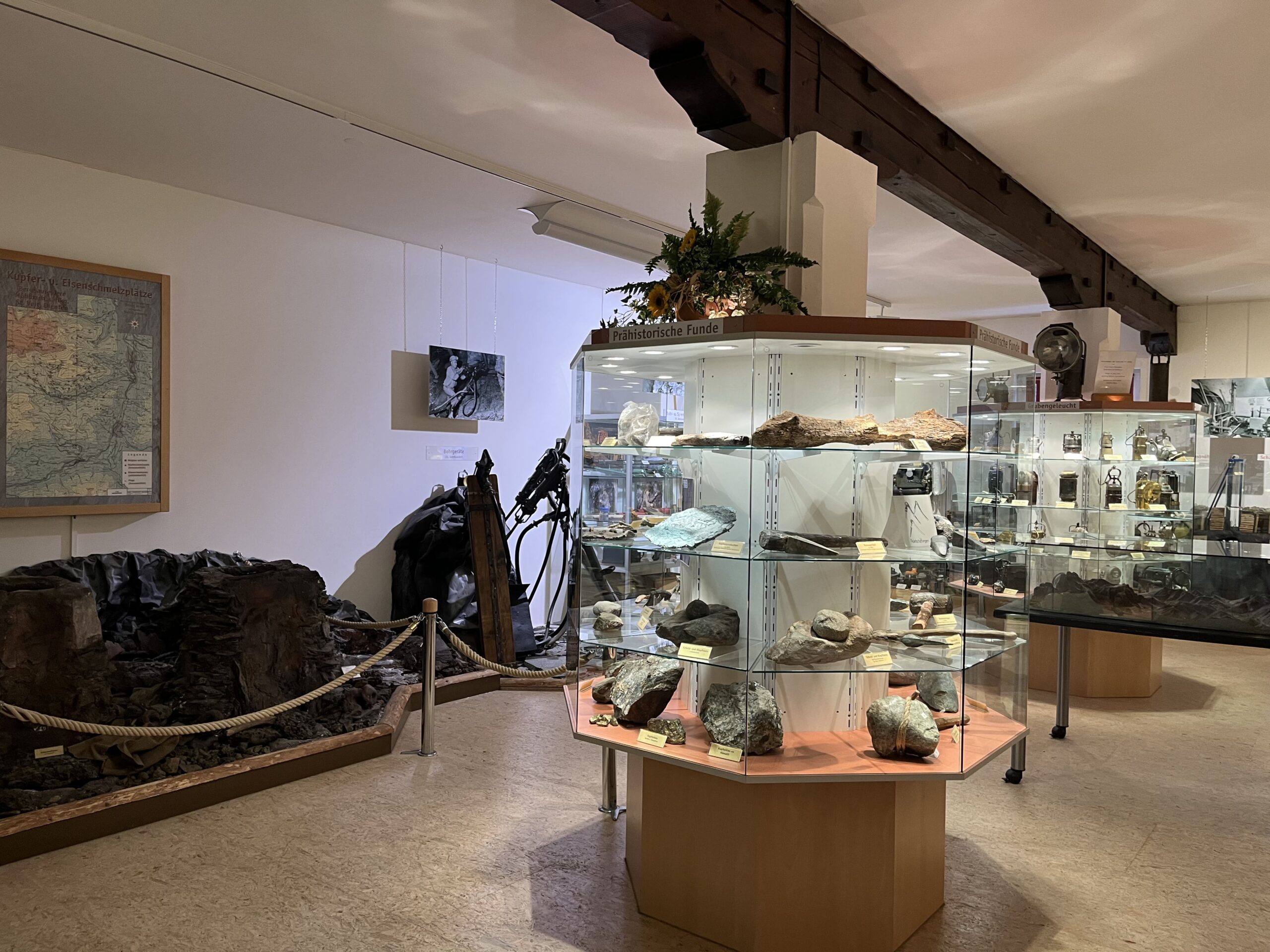Prehistoric Copper Mining
5000 years of Mitterberg!
The Mitterberg, with its peak Hochkeil
(1782 m), is dotted with traces of human
mining activity dating back to 5,000
years before our time and is proven to be
the most significant prehistoric copper
mining site in Central Europe. Mitterberg
copper was traded throughout Europe.
The numerous terrain incisions, known
as pits or 'pingen,‘ are silent witnesses
to these activities. The copper extracted
here, smelted with tin to create bronze,
can be found, for example, in the famous
"Nebra Sky Disk." This bronze disc with
gold inlays, estimated to be 3,800 years
old, is the oldest concrete astronomical
representation of the world.
Significant archaeologists, including Prof.
Much, Ing. Ernst Preuschen, surveyor Karl
Zschocke, Dr. Clemens Eibner and his wife
Dr. Alexandrine Eibner, Dr. Robert Krauß,
and Dr. Thomas Stöllner with his team
from the Mining Museum in Bochum, have
unearthed many secrets of the Mitterberg
during more than 100 years of research. A
replica of the "Nebra Sky Disk" and more
information can be found at the 'Mining
and Local History Museum‘ in Mühlbach
am Hochkönig and the Visitor Center in
Bischofshofen.
www.museum-hochkönig.com
Kids
Copper in everyday life
Copper is a metal that has many uses in our daily lives! Many products and activities - such as transport - and even our buildings rely on copper in many ways.
Copper is used in the manufacture of electrical wires, coins, musical instruments such as trumpets, electronic devices and various parts of trains, cars and aeroplanes. Copper is an important material that we cannot live without!
Copper in everyday life
Copper is both a chemical element and a metallic mineral, valued for its ductility (meaning it can be moulded or hammered without breaking) and its electrical conductivity! It was one of the first metals to be extracted and used by humans from around 8000 BC! It was first used for coins and ornaments, and the transition from stone to copper tools around 5500 BC helped civilisations leave the Stone Age behind. Around 3000 BC, people learnt to mix copper with other metals and the Bronze Age began. Since then, mankind has utilised and depended on copper in many ways.
We use copper both in its natural (i.e. pure) form, e.g. in electrical wires, and as an important component of alloys - metal-like substances produced by mixing different chemical elements. The most important copper alloys are bronze (copper + tin) and brass (copper + zinc)!
You may not realise it, but copper is in practically everything! In many everyday products and activities - such as transport - and even in our buildings, copper is used in one way or another. It is used to make coins, musical instruments such as trumpets and saxophones, appliances and various parts of trains, cars and aeroplanes.
In its original form, copper has a beautiful reddish metal colour. However, when it is exposed to oxygen, chemical reactions cause a greenish film to form on the surface, known as patina. This is the reason why many old bronze statues and roof tiles have turned green over time!




